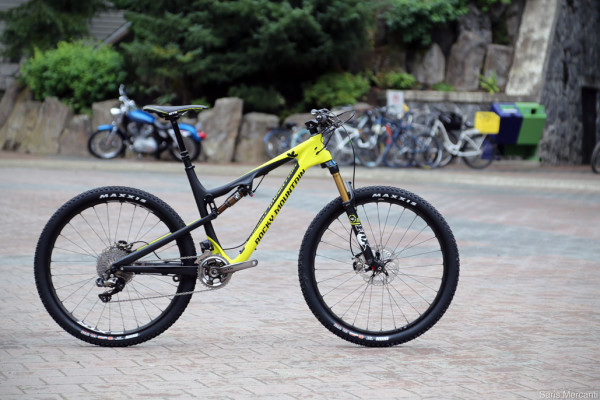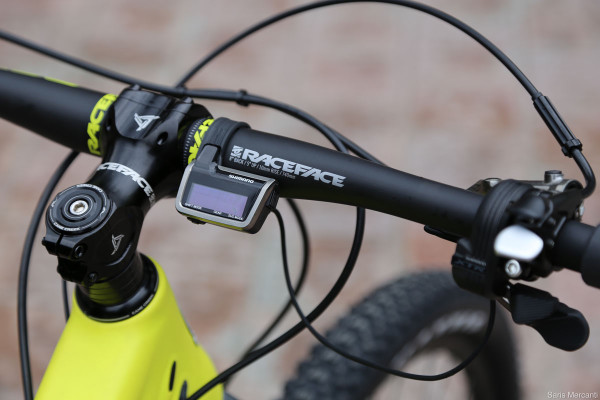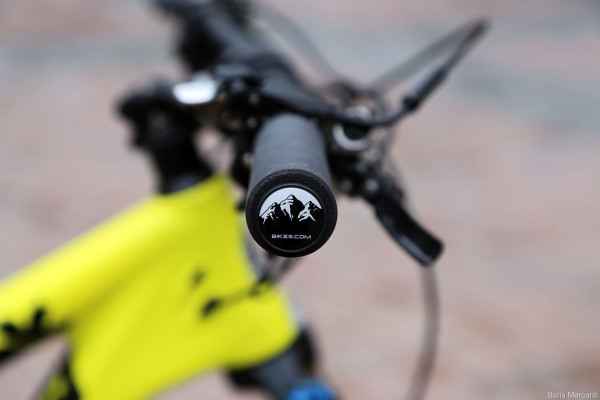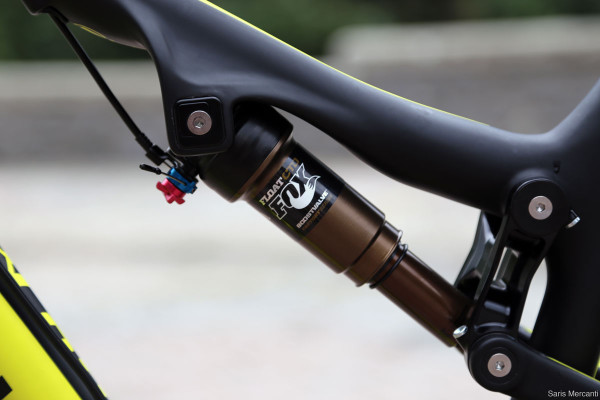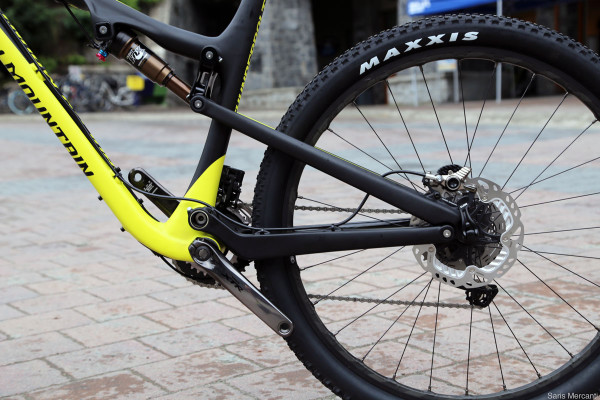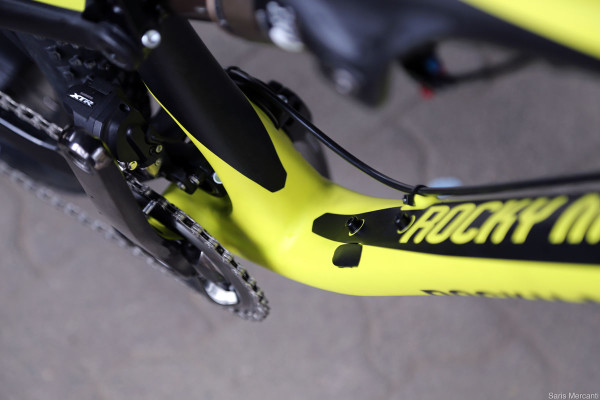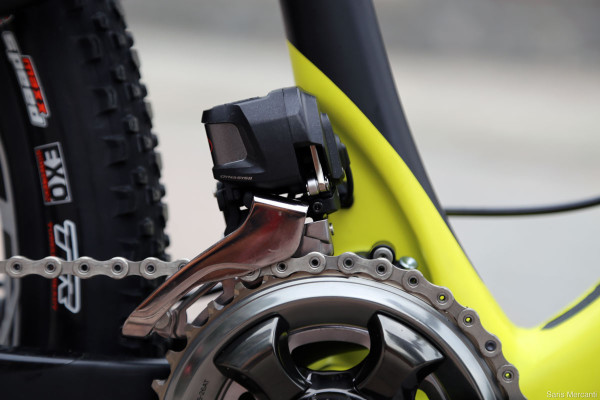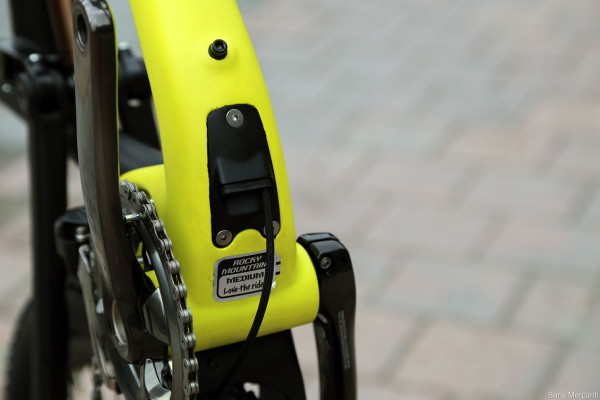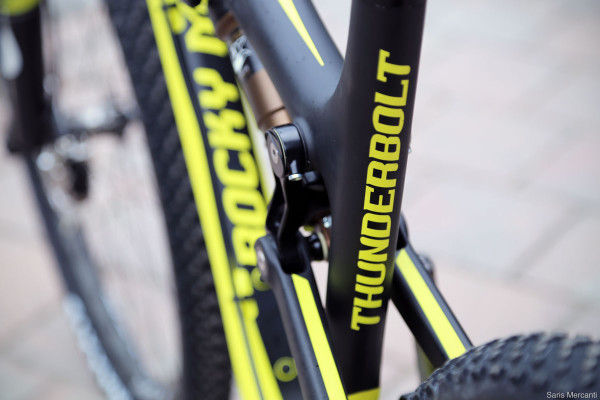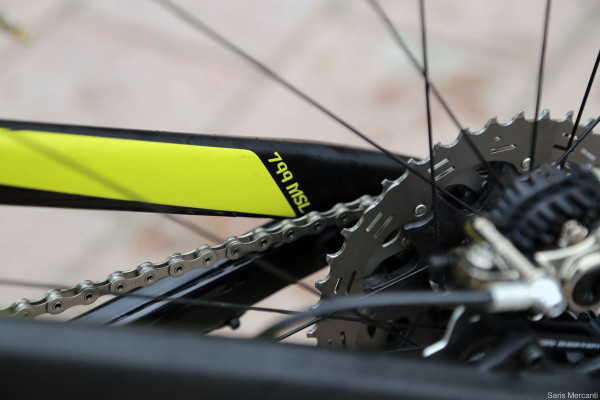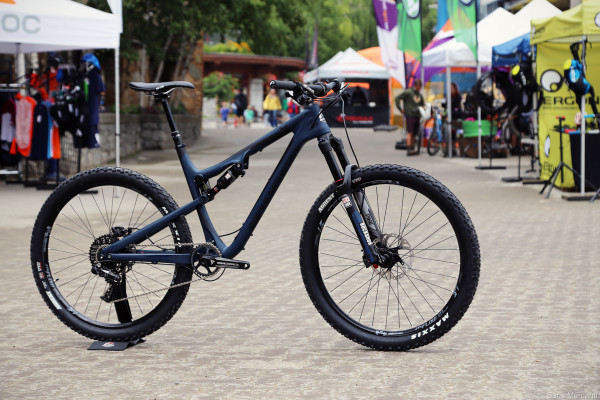The Rocky Mountain Thunderbolt is an XC bike with a fun streak. Initially introduced as an aluminum model last year, this year it’s been given the carbon treatment, and received some subtle updates to make it stiffer and more reliable.
At first glance, it’s easy to just see cables. Lots of cables. But like the various controls on a television remote, they all serve a purpose, which allows an adept rider to truly maximize the performance of the bike.
ESI grips help keep the weight down and comfort factor high.
The carbon Thunderbolt utilizes an interlocking flip chip system to adjust geometry. This feature, called Ride 9, is found on several other Rocky Mountain models, but is not available on the aluminum version of the Thunderbolt.
The top tube has a downward slope, a first for Rocky, which combined with the recessed shock mount, gives the Thunderbolt one of the lowest stand over heights on the market.
The bike utilizes Rocky’s four bar Smooth Link System to provide 120 mm of suspension. The main pivot now utilizes a large hollow axle with an expanding collet, that locks into the frame, and acts as a structural member. This gives the Thunderbolt a wider pivot stance and is stiffer.
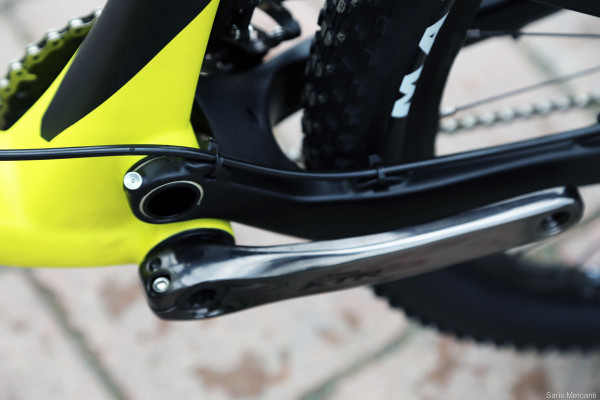
Like all Rocky’s, the bike uses bushings throughout. When we test rode the Altitude last year, this bikes 150mm travel brother, we noticed the bushings had a tendency to creak after several months. To mitigate this issue, the carbon Thunderbolt has grease ports throughout. The interval service varies depending on ride conditions, but Rocky suggests pushing new grease though after ~30 hours.
Currently, they have approved Slickoleum ( a personal favorite) and Belray. This is important to note, because greases can affect the quality of the bushings, causing them to shrink/swell, or turn brittle.

In the past, they used conical ABC bushings throughout (shown above), but based on testing with their new DH platform, they’ve switched to top hat style bushings on the larger pivot points, because they’re stiffer and last longer.
A port on the top of the down tube makes the frame compatible with Shimano’s new Side Swing Front Derailleur Standard. This routing method helps reduce the bulk of the FD, for increased rear tire clearance.
The top-of-the-line Thunderbolt will be sold with a Shimano XTR Di2 drivetrain, but several more affordable completes, and a frame only option will also be available.
The port for the battery, electronics, and other assorted wiring will be located on the downtube. This large access port can be removed via three hex head bolts, which makes routing simple.
It’s not quite as easy as some systems which have internal guides, but it’s a huge improvement over the much narrower port found on the 150mm travel Rocky Mountain Altitude.
Rocky bikes have typically had black/red/& white color schemes, but in recent years the company has been experimenting with new graphics and color ways.
The new accent colors are seamlessly integrated throughout the frame and the little details really help make the new bike stand out.
On the rowdier end of the spectrum, Rocky has outfitted the Thunderbolt with a larger fork, shorter stem, wider bar, and burlier tires, to create the B.C. Edition. Worthy of what they’d call Canadian Cross Country, this model should appeal to any gravity rider seeking an all purpose trail bike.
We’ve covered the different price points and spec previously, so head here to read up, or visit the Rocky Mountain Website.
